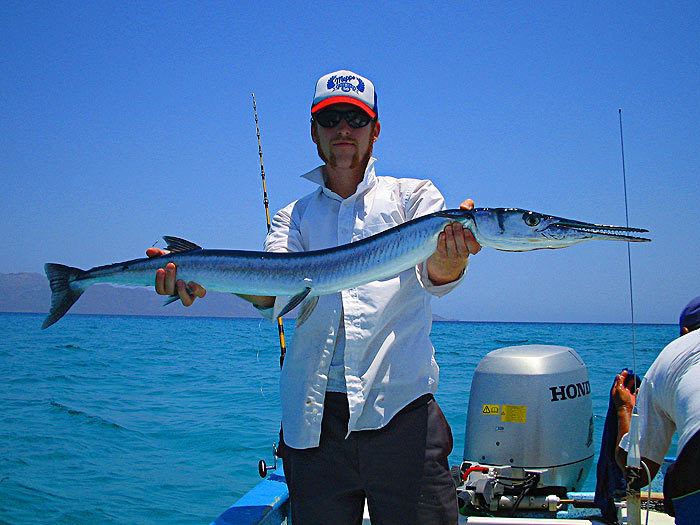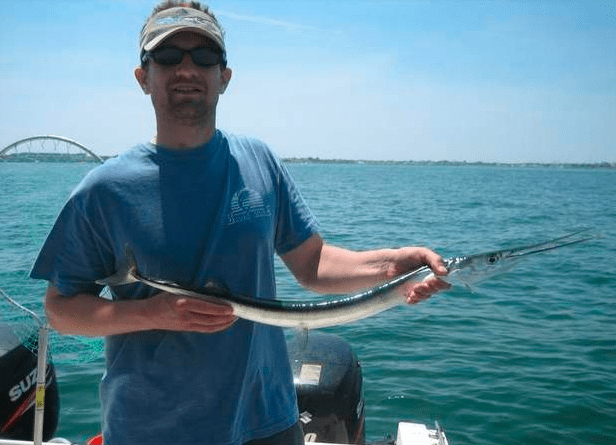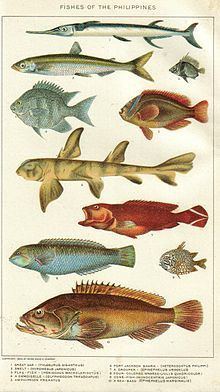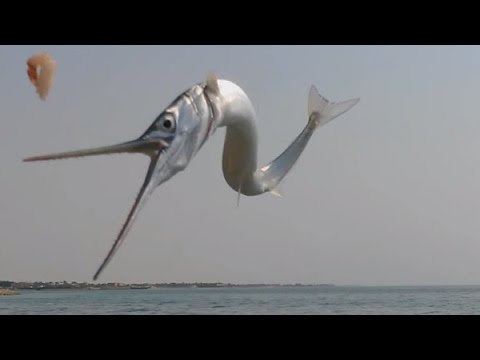Higher classification Tylosurus | Scientific name Tylosurus crocodilus Rank Species | |
 | ||
Similar Tylosurus, Needlefish, Flat needlefish, Beloniformes, Strongylura | ||
Houndfish jacks and mackerel from the jetty vlog 2
The houndfish, Tylosurus crocodilus, is a gamefish of the family Belonidae. It is the largest member of its family, able to grow up to 5 feet (1.5 m) and reach 10 pounds (4.5 kg). It is also often called the crocodile needlefish.
Contents
- Houndfish jacks and mackerel from the jetty vlog 2
- Florida fishing trip part 1 houndfish puffer and crevalle jack fort lauderdale fl
- Description
- Distribution and habitat
- Relationship to humans
- References

Florida fishing trip part 1 houndfish puffer and crevalle jack fort lauderdale fl
Description

While the houndfish has no spines, its dorsal fin has 21–25 soft rays, and its anal fin has 19–22. They are also known to have 80–86 vertebrae. A key way of distinguishing the houndfish from other members of the Tylosurus genus is that the houndfish's teeth point anteriorly when the fish is a juvenile. The teeth of other species are straight at all ages. The houndfish also has a more stout, cylindrical body and a shorter head than other needlefishes. They have dark blue backs and silver-white sides and are plain white ventrally. A houndfish has a distinct keel on the caudal peduncle, and the caudal fin itself is deeply forked. Juvenile houndfish possess an elevated, black lobe on the posterior of their dorsal fins. The longest recorded houndfish was 150 centimetres (4.9 ft), and the largest recorded weight was 6.35 kilograms (14.0 lb).
Distribution and habitat

In the Indian and Pacific Oceans, houndfish are found in the Red Sea and from the coast of South Africa, east to French Polynesia, and north to Japan, and south to New South Wales, Australia. Its usual subspecies, T. c. crocodilus is replaced by T. c. fodiator, also called the Mexican needlefish, in the eastern Pacific. The Mexican needlefish is found only in the eastern Pacific, from the Gulf of California south to Panama, including the area off Cocos Island. In the Atlantic Ocean, houndfish are known from New Jersey to Brazil in the west, and in the east, they are found from Fernando Poo, Cameroon, and Liberia to Ascension Island. Houndfish can also be found near Guinea, Senegal and Cape Verde.
A pelagic animal, houndfish can be found over lagoons and seaward reefs either as individuals or small groups, where they feed mainly on smaller fishes. Houndfish lay eggs which attach themselves to objects in the water via tendrils on the surface of each egg .
Relationship to humans

Considered a gamefish, houndfish can be caught by use of artificial lights, similar to other needlefishes. Although they are considered good to eat, and usually sold fresh, the market is small because houndfish flesh has a greenish colour similar to the Flat needlefish. Houndfish are considered somewhat dangerous and are feared by fishermen because of their size and tendency to leap out of the water, causing puncture wounds with their beaks, when frightened or attracted to the very lights used to catch them.
In April 2000, a woman suffered a severe injury after being stabbed in the neck by a houndfish leaping above the water while snorkeling in the Florida Keys. In October, 2010 an ocean-kayaker was injured when she was struck in the back (and was treated for a collapsed lung) by the beak of a houndfish that jumped out of the water near her boat.
